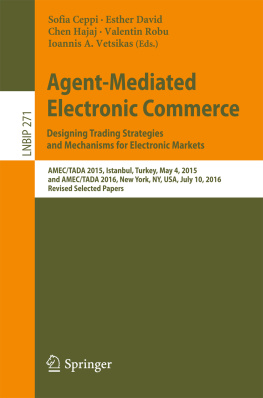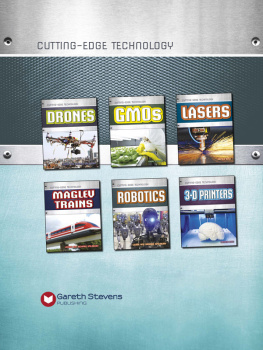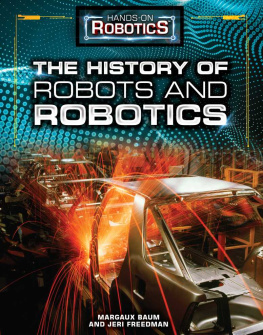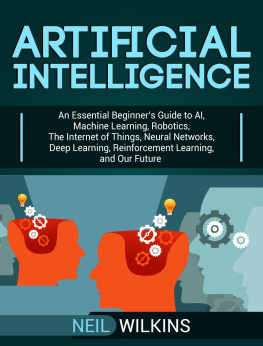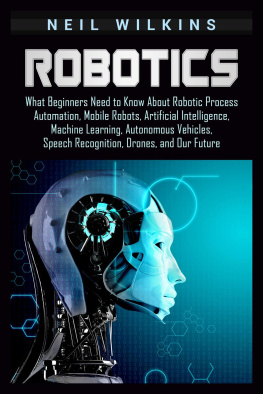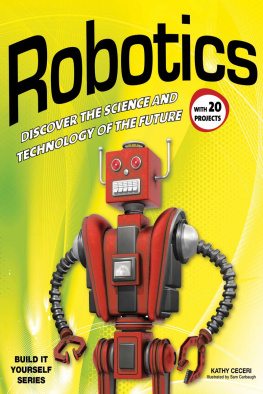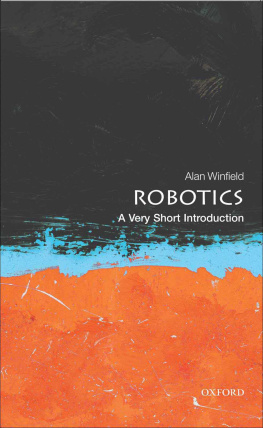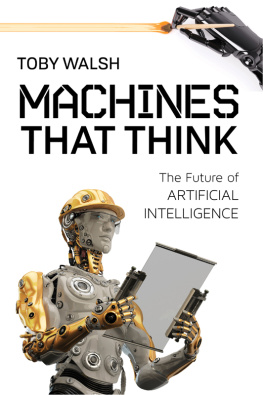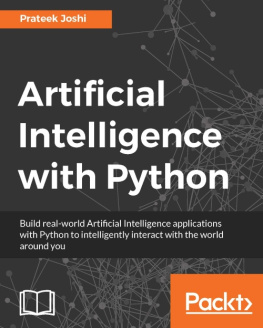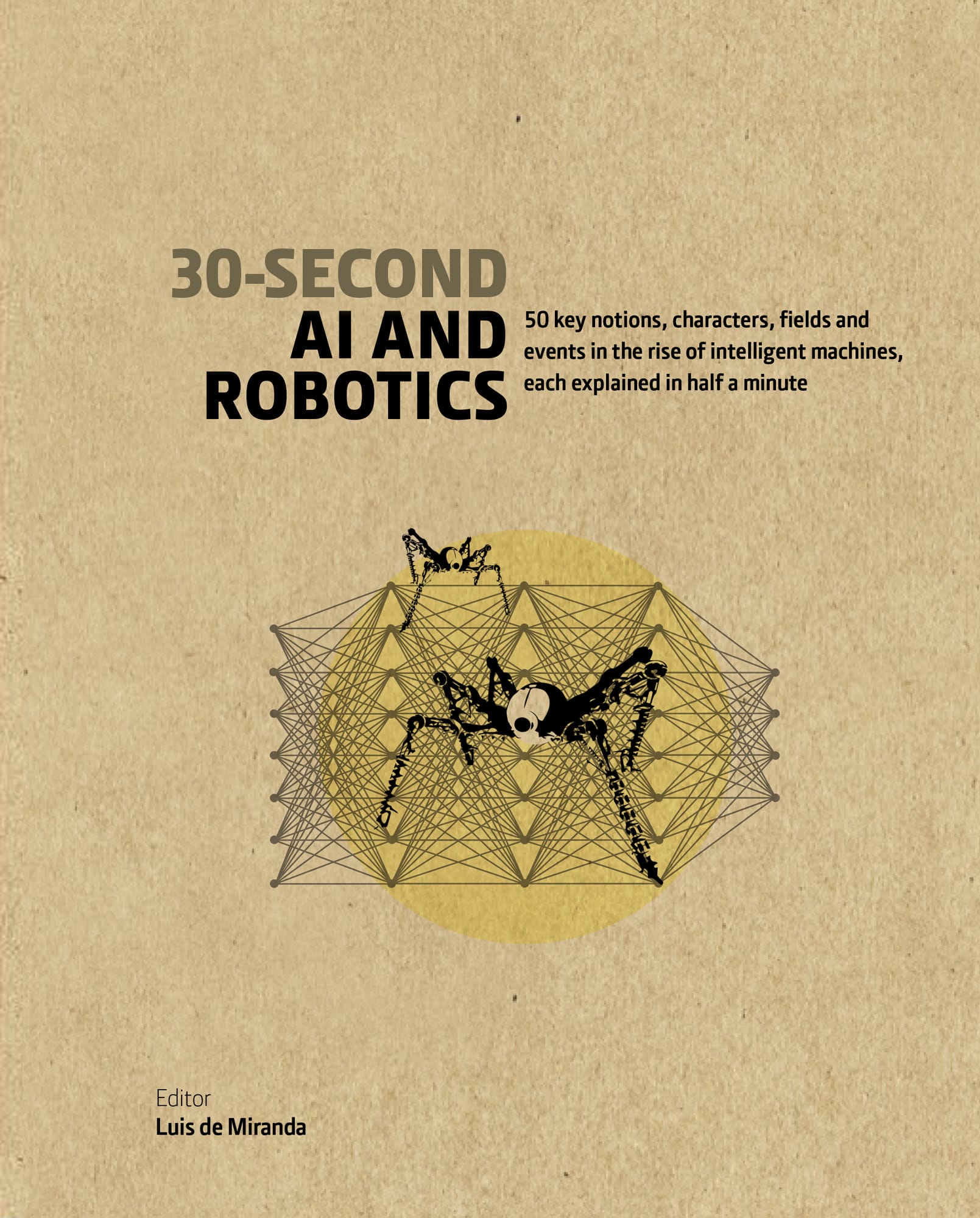30-SECOND
AI AND ROBOTICS
50 key notions, characters, fields and events in the rise of intelligent machines, each explained in half a minute
Editor
Luis de Miranda
Contributors
Sofia Ceppi
Neha Khetrapal
Ayse Kucukylimaz
Pedro U. Lima
Andreas Matthias
Lisa McNulty
Luis de Miranda
David Rickmann
Mario Verdicchio
Illustrations
Steve Rawlings

INTRODUCTION
Luis de Miranda
When personal computers started appearing in homes more than thirty years ago, many non-users thought they were complicated devices for a minority of engineering-minded specialists objects that the average citizen could safely ignore. Not so. In fact, the happy few who tried to understand what was going on in the digital world soon developed a clear advantage: they became adapted to the new world, and others then had to catch up. Today, artificial intelligence and robotics are spreading like technological wildfire. If you ignore the phenomena, you are simply burying your head in the sand. Yet fear of these technologies is understandable, given the information overload about the latest achievements of AI and robotics.
The title you are holding was carefully conceived by a team of highly qualified specialists as the gentlest way to explain to non-specialists what this new technological revolution is about. It is a comprehensive guided tour of what it means for us humans to be surrounded by machines that can outsmart us, replace us, or mimic us more and more convincingly. This book is your step towards embracing or even changing the new technologies, or at least having an informed and critical opinion about them.
30-Second AI and Robotics is not about the future its about the present. AI is already capable of booking a table for you by calling the restaurant and having an effective short dialogue without being identified as a machine. Neural connections can be made between a human brain and a robotic device so that people who have lost the use of an arm can utilize the power of mental focus to grab a drink with their mechatronic limb. We are already sending robots into the cosmos to prepare for the space colonies of tomorrow. Machines are helping elderly people or disabled children to improve their quality of life.
In some storage facilities, robotic swarms have almost completely replaced human workers, and a driverless car or truck might have crossed your road without you noticing it.
This book is an informative cultural and intellectual story. It is divided into seven chapters, which take off from historical myths regarding robots and AI, fly through the main ideas regarding intelligent machines in society, and land on what seems to be a likely scenario for the future: our anthrobotic merging with machines, with which we will live symbiotically. On this journey, you will discover the Turing Test, deep learning, drones and medical AI. Youll read about smart assistants, virtual reality, the Internet of Things, augmented minds, neural networks and all areas of the so-called fourth industrial revolution.
Each entry discusses one of the 50 major ideas, inventions, tools or applications of AI and robotics. Every topic is presented in the same intuitive format: the 3-Second Byte is a quick summary; the 30-Second Data section offers a comprehensive overview of the subject with an explanation of how it works; and the 3-Minute Deep Learning paragraph presents a topic with ethical or philosophical implications for you to reflect on. The links to related subjects allow you to read the book in a non-linear way, following related themes. The 3-second biographies are inspiring micro-portraits of leading figures such as Elon Musk, Isaac Asimov, Alan Turing and Geoffrey Hinton. Each chapter contains a glossary of the most important terms.
Whether you are a student wondering about your future career in this anthrobotic world or are simply curious about our new social reality, this book is the easiest way to become informed without having to learn how to code or to connect a single electric wire. AI and robotics are a social-cultural phenomenon, sometimes positive, sometimes potentially negative, a series of ideas and practices that are shaping our world. Should we be afraid of robots and AI? This book will help you to make up your mind.

FICTIONAL & HISTORICAL ROBOTS
FICTIONAL & HISTORICAL ROBOTS
GLOSSARY
AI winter Artificial Intelligence is a field that experiences cyclical periods of general interest and funding. In between the periods of enthusiasm for AI are wintry years during which research appears to stagnate. During such periods, it can be beneficial to pause, reflect and generate new ideas.
analogue A term used to describe non-digital technology, in which signals are not converted into discrete digits of 0 and 1, but rather into continuous physical pulses. A mechanical watch is analogue, and so is the human voice in air.
android Coined from the Ancient Greek word meaning male and oid (meaning like or having the form of), android is a word for robots that are male or human-like. A robot with a female appearance should be referred to as a gynoid, although the term android is often used instead.
artificial neural networks AI computing systems that are designed to work like a brain. They learn progressively by connecting inputs of information with outputs, through a filtering process that is partly autonomous, and via a collection of nodes called artificial neurons, in which each connection is a simplified version of a synapse. This model is responsible for the success of deep learning since 2011.
autonomous In the field of robotics and AI, autonomous means being able to function with limited human intervention. An autonomous system can adapt its behaviour depending on the situation.
cybernetics Norbert Wiener defined cybernetics in 1948 as the study of control and communication in systems involving machines and humans. This interdisciplinary field is concerned with organization, efficiency and governance. It tends to see all living beings as part of systems, and systems themselves.
cyborg A cybernetic organism, a hybrid being composed of flesh and mechatronic parts. A cyborg could be a bionic robot that has human features, or a human enhanced with electronic and mechanical parts.


